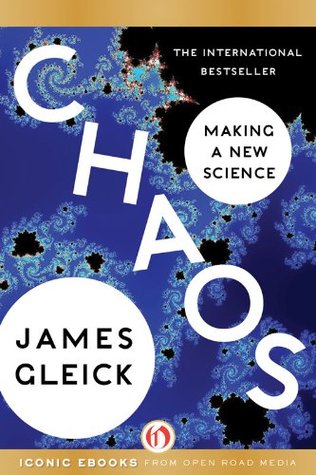More on this book
Community
Kindle Notes & Highlights
Scientists and nonscientists alike, Yorke believed, can easily mislead themselves about complexity if they are not properly attuned to it. Why do investors insist on the existence of cycles in gold and silver prices? Because periodicity is the most complicated orderly behavior they can imagine. When they see a complicated pattern of prices, they look for some periodicity wrapped in a little random noise.
In a real-world system, an observer would see just the vertical slice corresponding to one parameter at a time. He would see only one kind of behavior—possibly a steady state, possibly a seven-year cycle, possibly apparent randomness. He would have no way of knowing that the same system, with some slight change in some parameter, could display patterns of a completely different kind. James Yorke analyzed this behavior with mathematical rigor in his “Period Three Implies Chaos” paper. He proved that in any one-dimensional system, if a regular cycle of period three ever appears, then the same
...more
The blossoming of chaos in the United States and Europe has inspired a huge body of parallel work in the Soviet Union; on the other hand, it also inspired considerable bewilderment, because much of the new science was not so new in Moscow. Soviet mathematicians and physicists had a strong tradition in chaos research, dating back to the work of A. N. Kolmogorov in the fifties. Furthermore, they had a tradition of working together that had survived the divergence of mathematics and physics elsewhere.
The world would be a better place, May argued, if every young student were given a pocket calculator and encouraged to play with the logistic difference equation. That simple calculation, which he laid out in fine detail in the Nature article, could counter the distorted sense of the world’s possibilities that comes from a standard scientific education.
a kind of symmetry, not a symmetry of right and left or top and bottom but rather a symmetry of large scales and small.
The rare scholars who are nomads-by–choice are essential to the intellectual welfare of the settled disciplines.”
In Mandelbrot’s words: “There was a long hiatus of a hundred years where drawing did not play any role in mathematics because hand and pencil and ruler were exhausted. They were well understood and no longer in the forefront. And the computer did not exist. “When I came in this game, there was a total absence of intuition. One had to create an intuition from scratch. Intuition as it was trained by the usual tools—the hand, the pencil, and the ruler—found these shapes quite monstrous and pathological. The old intuition was misleading.
When E. I. DuPont de Nemours & Company and the United States Army finally began to produce a synthetic match for goose down, it was by finally realizing that the phenomenal air-trapping ability of the natural product came from the fractal nodes and branches of down’s key protein, keratin.
It was a legitimate question. If one scientist announces that a thing is probably true, and another demonstrates it with rigor, which one has done more to advance science? Is the making of a conjecture an act of discovery? Or is it just a cold-blooded staking of a claim? Mathematicians have always faced such issues, but the debate became more intense as computers began to play their new role. Those who used computers to conduct experiments became more like laboratory scientists, playing by rules that allowed discovery without the usual theorem-proof, theorem-proof of the standard mathematics
...more
Mathematics differs from physics and other applied sciences in this respect. A branch of physics, once it becomes obsolete or unproductive, tends to be forever part of the past. It may be a historical curiosity, perhaps the source of some inspiration to a modern scientist, but dead physics is usually dead for good reason. Mathematics, by contrast, is full of channels and byways that seem to lead nowhere in one era and become major areas of study in another. The potential application of a piece of pure thought can never be predicted. That is why mathematicians value work in an aesthetic way,
...more
To Mandelbrot, art that satisfies lacks scale, in the sense that it contains important elements at all sizes.
THEORISTS CONDUCT EXPERIMENTS with their brains. Experimenters have to use their hands, too. Theorists are thinkers, experimenters are craftsmen. The theorist needs no accomplice. The experimenter has to muster graduate students, cajole machinists, flatter lab assistants. The theorist operates in a pristine place free of noise, of vibration, of dirt. The experimenter develops an intimacy with matter as a sculptor does with clay, battling it, shaping it, and engaging it. The theorist invents his companions, as a naïve Romeo imagined his ideal Juliet. The experimenter’s lovers sweat, complain,
...more
The emergence of chaos as an entity unto itself was a story not only of new theories and new discoveries, but also of the belated understanding of old ideas. Many pieces of the puzzle had been seen long before—by Poincaré, by Maxwell, even by Einstein—and then forgotten. Many new pieces were understood at first only by a few insiders. A mathematical discovery was understood by mathematicians, a physics discovery by physicists, a meteorological discovery by no one. The way ideas spread became as important as the way they originated.


